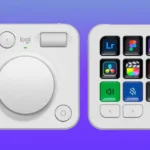A new controversy has erupted in the AI space as users on social media have discovered an unexpected and potentially unethical use case for Google’s latest AI model. The newly launched Gemini 2.0 Flash has been found capable of removing watermarks from images—including copyrighted stock media from providers like Getty Images. This discovery has ignited discussions about AI ethics, copyright concerns, and the implications of AI-powered image editing tools.
Gemini 2.0 Flash: A Powerful Yet Unrestricted AI Model
Last week, Google expanded access to Gemini 2.0 Flash, a lightweight but powerful AI model that boasts advanced image generation and editing capabilities. Available through Google AI Studio, the model allows users to generate and modify images with simple text prompts, making it an attractive tool for developers and creators alike. However, it appears that its editing capabilities extend far beyond what Google likely intended.
Unlike some AI models that come with strict usage policies, Gemini 2.0 Flash seemingly lacks robust safeguards against copyright infringement. Social media users quickly discovered that the model could not only erase watermarks from images but also seamlessly fill in the areas where the watermark was previously located. This feature, whether intentional or not, has sparked serious concerns about copyright infringement and unauthorized content modification.
AI Users Show Off Gemini’s Watermark-Removing Skills
Tech enthusiasts and AI users were quick to test and share their findings on platforms like X (formerly Twitter) and Reddit. One user, @deedydas, demonstrated how effortlessly the AI removes watermarks from images, captioning their post:
“New skill unlocked: Gemini 2 Flash model is really awesome at removing watermarks in images!” (March 15, 2025)
Another AI enthusiast, @tanayj, highlighted that not only does Gemini 2.0 Flash remove watermarks, but it also attempts to insert its own watermark in the edited image:
“Gemini 2.0 Flash, available in Google’s AI Studio, is amazing at editing images with simple text prompts. It also can remove watermarks from images (and puts its own subtle watermark in instead 🤣).” (March 16, 2025)
These demonstrations raise critical questions about the implications of AI-powered tools with such advanced image manipulation capabilities.
How Effective Is Gemini 2.0 Flash at Removing Watermarks?
While several AI tools, including Adobe’s Generative Fill and third-party platforms, offer similar functionality, Gemini 2.0 Flash appears to be exceptionally skilled at removing watermarks. It doesn’t just erase the watermark but also reconstructs the underlying details with remarkable accuracy. This makes it particularly concerning for copyright holders, as the technology could be misused to distribute stock images, artwork, and copyrighted content without proper licensing.
That said, the model isn’t flawless. Users have reported that Gemini 2.0 Flash struggles with certain semi-transparent watermarks and those that cover large portions of an image. This means that while it’s capable of removing many watermarks, it may not be foolproof in all cases.
Legal and Ethical Implications
The ability to remove watermarks from images without permission carries serious legal and ethical concerns. Under U.S. copyright law, removing a watermark from a copyrighted image without the owner’s consent is illegal except in rare circumstances. Many AI models, including OpenAI’s GPT-4o and Anthropic’s Claude 3.7 Sonnet, explicitly refuse to remove watermarks, citing ethical and legal concerns.
For example, Claude 3.7 Sonnet warns users that watermark removal is “unethical and potentially illegal.” Google, however, appears to have taken a more permissive approach—at least for now.
Google’s Response and Industry Backlash
As of now, Google has not issued an official statement regarding the controversy. However, it’s worth noting that Gemini 2.0 Flash is currently labeled as an ‘experimental’ feature and ‘not for production use.’ This suggests that Google is still fine-tuning the model and could implement stricter guardrails in future updates.
Still, industry experts predict that copyright holders, including major stock photo agencies like Getty Images, may take legal action if Google does not restrict Gemini 2.0 Flash’s watermark-removal capabilities. Companies in the creative industry have already expressed frustration over AI-generated content infringing on copyrighted works, and this latest development could further escalate tensions.
The Bigger Picture: AI, Copyright, and Responsible Use
The rapid advancement of AI-powered tools like Gemini 2.0 Flash is raising pressing questions about the responsible use of artificial intelligence. While AI has the potential to revolutionize content creation, its misuse—whether intentional or not—can lead to legal battles, financial losses for creators, and ethical dilemmas surrounding intellectual property rights.
As AI companies continue to push the boundaries of what’s possible, one thing is clear: the industry must implement stronger safeguards to prevent misuse while still fostering innovation. Google and other AI giants must proactively address concerns before regulators step in to impose stricter legal restrictions.
For now, users should be mindful of the ethical and legal risks associated with AI-assisted image editing. The debate over watermark removal is far from over, and how Google responds could set a precedent for the future of AI-driven content manipulation.
What are your thoughts on AI-powered watermark removal? Should companies impose stricter guidelines, or is this just another tool in the evolving landscape of digital content creation? Let us know in the comments!










